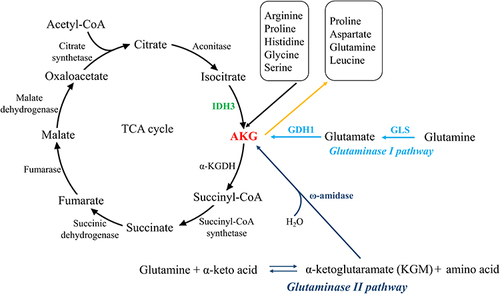Figures & data
Figure 1 Three major metabolic pathways that generating and consuming AKG. The left part shows TCA cycle, in which isocitrate is converted to AKG by IDH3 in mitochondrion, and subsequently AKG is catalyzed by α-KGDH to generate succinyl-CoA. The right part illustrates the other two signaling which utilize glutamine to generate AKG, namely glutaminase I pathway (occurring mostly in mitochondrion) and glutaminase II pathway (both in the cytosol and mitochondrion). Besides, AKG is also involved in amino acids metabolism, as demonstrated in the upper right.


